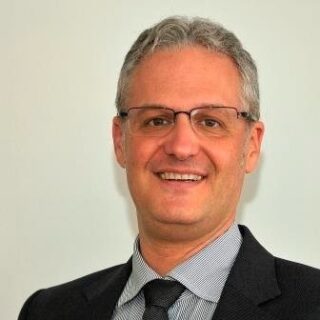
Sustainability ambitions are by necessity bold. The changing climate is forcing every business to examine their operations, improve their resilience and commit to reducing their contribution to carbon emissions.
Translating our clients’ strategic vision into reality is a task that Deerns is undertaking around the world, with our work on major airports leading the way.
Change isn’t about a single project
Airports account for around 3% of global aviation carbon emissions, expectation on them to address this continues to mount. Royal Schiphol Group has long been a leader in the airport operations industry. With the climate change one of the most severe challenges facing the planet, the company has committed to meeting zero carbon emissions and zero waste from its own operations by 2030. By 2050 it expects Schiphol airport to be energy positive, surpassing the industry-wide goal of achieving energy neutral by that date.
Realising long term strategic vision isn’t about a single project but instead it’s the incremental changes that add up. We’ve worked with Schiphol Airport for over 60 years so are well placed to support their ambitions, one project at a time.
The freedom to ask “what if?”
Key to the success of any project or long-term strategy is the freedom – and bravery – to ask “what if?”. Deerns’ culture has always been to look at a project as part of the bigger picture.
In Schiphol’s case, their sustainability ambition and the four pillars that they see as central to achieving them (energy positive, sustainable aviation, circular economy and communities) are made explicitly clear. Our team has a detailed and thorough understanding of these goals ensuring that any project we are involved in for the airport, no matter how small, is approached through this framework.
A recent example includes a new design we put forward for an aircraft stand. We proposed using steel instead of the traditional concrete slab(s). This not only helps reduce the use of carbon heavy material such as concrete but also increases the ease and likelihood that the materials used to make the stand can one day be reused in another building project – which fits neatly into Schiphol’s circular economy pillar too.
Likewise taking the time to question the usual way of doing things, can result in some surprising outcomes. Harnessing the latest parametric design technology allows our experts to explore options and model scenarios to arrive at innovative solutions which improve the sustainability credentials of new buildings or projects. This has for example resulted in suggestions that we address the challenge of cooling airport facilities by allowing heat to escape through of the façade rather than designing it as would normally be expected and then installing a highly efficient, but costly, cooling system.
Collaboration across the project team
We see projects as a collaborative process, not just between consultant and client but also across our internal teams. Comparing an airport to a healthcare facility might seem strange at first but there are parallels to be drawn – both are large scale facilities with a high requirement for specialist functions and multiple usage requirements.
Throughout our projects we work closely with our Deerns colleagues in other engineering disciplines so that clients benefit from the latest innovation and research whichever field it’s from.
Our qualified inhouse LEED and BREEAM certification experts provide insights and advice to our project teams. Whether a project is aiming for a platinum certification or not, the guidance within the assessment criteria is key to decision support around sustainability practices.
We are also always seeking ways to facilitate data and information gathering from all involved stakeholders. Understanding the variation in their needs e.g. what energy requirements an individual retail outlet might have in an airport terminal helps us take a holistic view. And identify potential savings or efficiencies that could be the next step in the sustainability journey.
Engineering for the future
Present day projects will have a lasting impact on the future sustainability of businesses. This is of course inherently apparent in airport campus work. Looking past the short-term results to fully appreciate and understand the bigger picture is at the heart of the incremental steps approach.
Designing projects that not only meet current sustainability requirements but support the future resilience to changing demands and changing climate is essential. This includes considering how materials might be reused or repurposed – whether that is designing structures that can be dismantled for reuse or considering a modular building approach.
This long-term vision cannot just focus on the immediate project or even – in Schiphol’s case – the airport campus. It must, as is one of Schiphol’s pillars – also establish how the wider community can be encompassed by the sustainable vision. Can materials be sourced or redeployed in a wider area than just the airport? Or how can heat produced by the airport be used to benefit the wider community?
Taking the first step together
We all know how important creating a more sustainable future is but sometimes it’s hard to know how to take the first step. Drawing on the combination of decades of experience, our wide range of skills and the latest digital tools, we can help you get started.




































